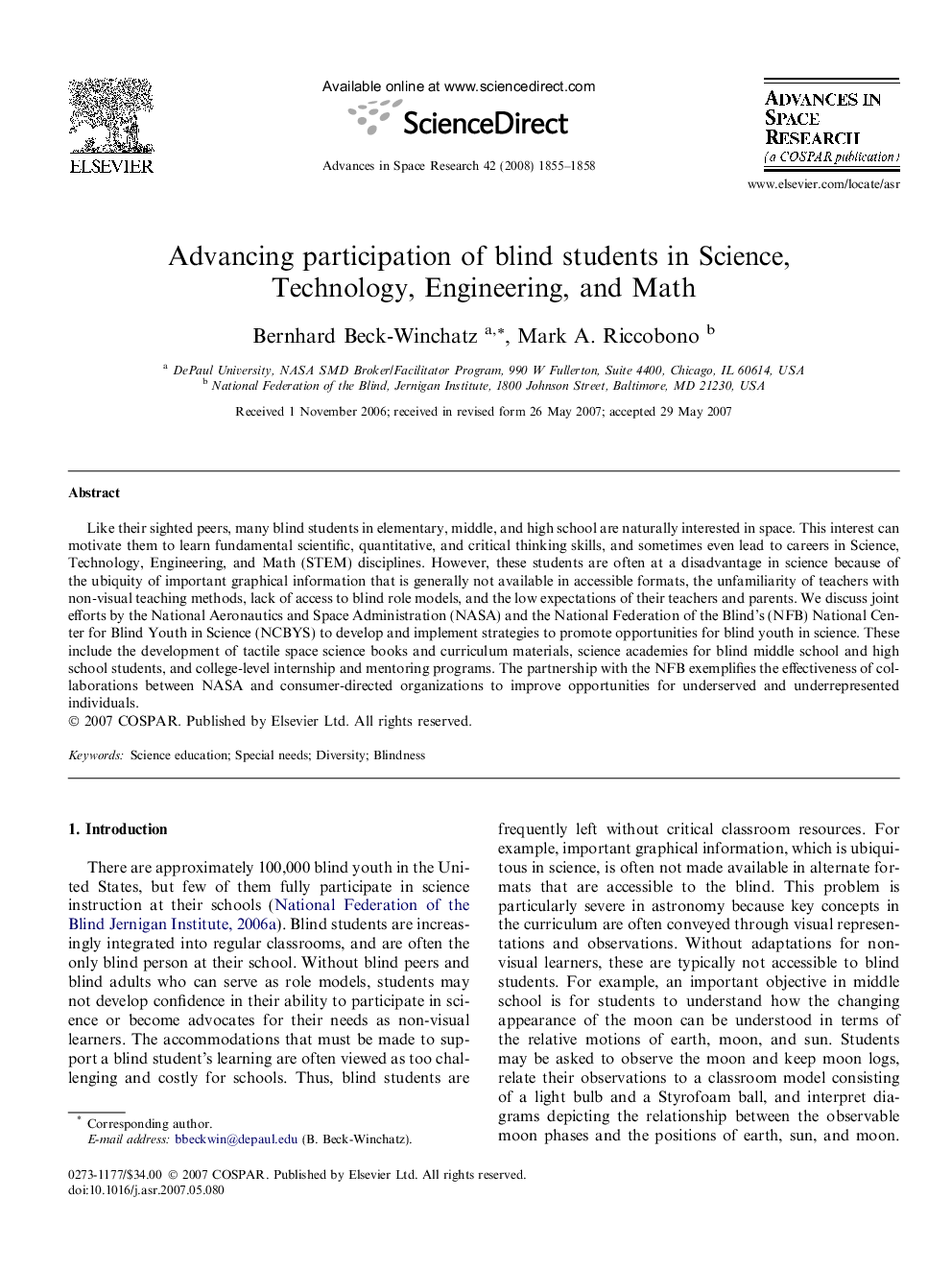| Article ID | Journal | Published Year | Pages | File Type |
|---|---|---|---|---|
| 1768339 | Advances in Space Research | 2008 | 4 Pages |
Like their sighted peers, many blind students in elementary, middle, and high school are naturally interested in space. This interest can motivate them to learn fundamental scientific, quantitative, and critical thinking skills, and sometimes even lead to careers in Science, Technology, Engineering, and Math (STEM) disciplines. However, these students are often at a disadvantage in science because of the ubiquity of important graphical information that is generally not available in accessible formats, the unfamiliarity of teachers with non-visual teaching methods, lack of access to blind role models, and the low expectations of their teachers and parents. We discuss joint efforts by the National Aeronautics and Space Administration (NASA) and the National Federation of the Blind’s (NFB) National Center for Blind Youth in Science (NCBYS) to develop and implement strategies to promote opportunities for blind youth in science. These include the development of tactile space science books and curriculum materials, science academies for blind middle school and high school students, and college-level internship and mentoring programs. The partnership with the NFB exemplifies the effectiveness of collaborations between NASA and consumer-directed organizations to improve opportunities for underserved and underrepresented individuals.
